The adventurous history of a ninth-century codex: the BNCR's Victor Emmanuel 1631
The flood that devastated Florence and its environs on November 4, 1966, did not only cover works of art with mud, starting with Cimabue’s Crucifix of Santa Croce, which sustained irreparable damage and became, despite itself, a sort of symbol of the tragic event that resulted in the loss of 35 lives and extensive damage to the city’s historical and artistic heritage. Also severely affected was the city’s book heritage, and among the volumes that ended up under the water and mud was a precious manuscript, which now figures among the rarest and most significant objects in the National Central Library of Rome, where it is currently kept: the Vittorio Emanuele 1631. Why this name? How did it arrive in Italy? And why, when the Arno overflowed, was the codex in the vault of a Florentine bank? These are just a few stages in the fascinating and adventurous history of this manuscript.
The codex, also known in the past as Codex Aesinas as it was discovered in the town of Jesi(Aesis in Latin) in 1902, contains one of the oldest records of Ditti Cretan’s Bellum Troianum, Tacitus’Agricola (a work of which the codex in the National Central Library in Rome is the only medieval witness) and Germania by the same author. The manuscript, divided into nine fascicles, consists of a large 9th-century fragment within which sheets and fascicles copied in the 15th century were also inserted to supplement the missing text. The 9th-century portion was written in Carolingian script (a date between about 840 and 850 has been assumed). There were at least two copyists who attended to the work: one dealt with the Bellum Troianum, the other with the works of Tacitus. The additions, on the other hand, date from the second half of the 15th century and are in humanistic script, executed mainly by a single person. It is a sober work: there are no decorations; there are incipits and explicits in epigraphic capital and alternate lines (red and green), with titles in red and gold oncial. The only drawing is at the end of the fourth book of the Bellum Troianum, where a tree executed in red ink is noted. This is a singular work not so much because of its content, although at the time of its discovery in the 15th century it represented something of a revelation to the humanistic world, because until then Tacitus’Agricola and Germania were unknown. Vittorio Emanuele 1631 is singular by virtue of the unique and troubled history, more than eleven centuries long, behind its pages.
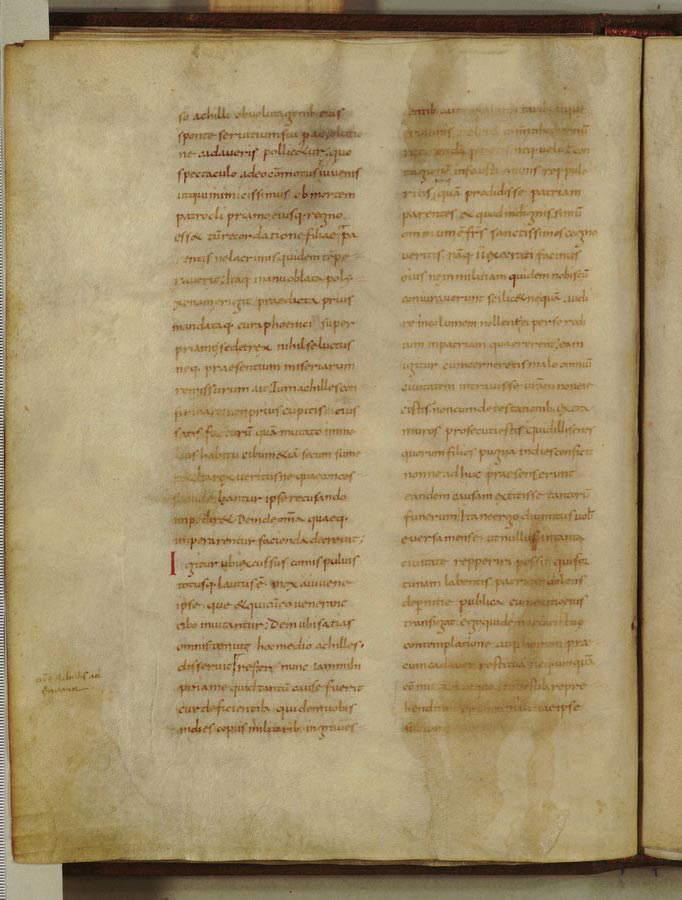 Victor Emmanuel
Victor Emmanuel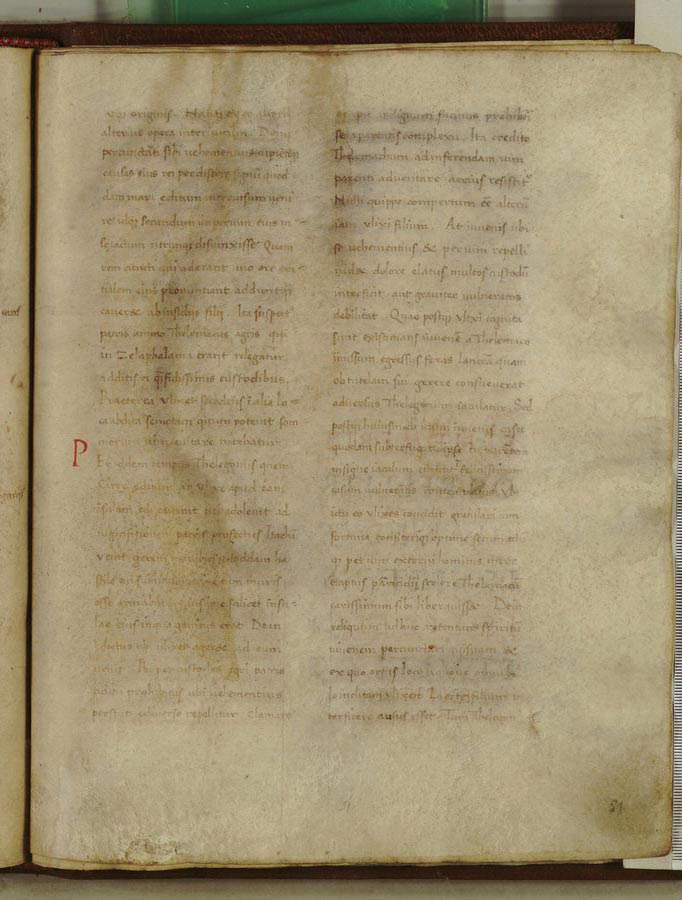 Victor Emmanuel
Victor EmmanuelIt is believed that the 9th-century fragment should be made to coincide with the Hersfeld Codex: this designation indicates a miscellaneous manuscript, also dating from the 9th century, the existence of which is reported by a monk of Hersfeld Abbey to the great humanist Poggio Bracciolini. The monk, to be identified according to scholar Ludwig Pralle in the person of Heinrich von Grebenstein, in fact wrote a letter to Bracciolini informing him that he had found this codex including “aliqua opera Cornelii Taciti nobis ignota” (“some works of Cornelius Tacitus unknown to me”). We have no idea where it was copied, at the time it was made: however, a resemblance to the handwriting of the Frankish abbot Loup de Ferrières has been found, and this circumstance, together with other clues, has led to the hypothesis that the codex was made in the scriptorium of Fulda, Germany, where Loup was active between 829 and 836. Others, however, have speculated on a French origin of the codex.
Of the Hersfeld Codex, wrote scholar Francesca Niutta, "Guarino Veronese and the Panormita speak in their letters in the years immediately following; Niccoli [Niccolò Niccoli, ed.] included it in 1431 in his Commentarium in peregrinatione Germanie, a list of books delivered to Cardinal Cesarini, who in Germany, to which he left bound, was supposed to search for them; specifically in the monastery of Hersfeld was to be sought the codex of Tacitus." The coincidence between Victor Emmanuel 1631 and the Hersfeld Codex is widely accepted by scholars: the few who have refuted this coincidence have pointed to the same texts that appear in the codex as possible subjects, since Niccoli’s Commentarium refers not only to Germania andAgricola but also to Svetonius’ Dialogus de oratoribus and De grammaticis et rhetoribus, which are missing from the Codex Exinate. In contrast, Ditti Cretan’s Bellum Troianum appears in the codex of the Biblioteca Nazionale Centrale in Rome, as mentioned above, which is not mentioned in the humanistic sources. However, scholars Charles E. Murgia and R.H. Rodgers noted that the work of Ditti Cretese at the time did not represent a discovery on a par with the two works of Tacitus, so it may have been among the “multi alii” (“many others”) texts not mentioned individually by Grebenstein. Vittorio Emanuele 1631 was, however, already in Rome in 1455, where it was perhaps brought by the humanist Enoch d’Ascoli, who had received a specific mandate from Pope Nicholas V, born Tomaso Parentucelli, to go all over Europe in search of manuscripts for the library that the pontiff was establishing, the future Vatican Library.
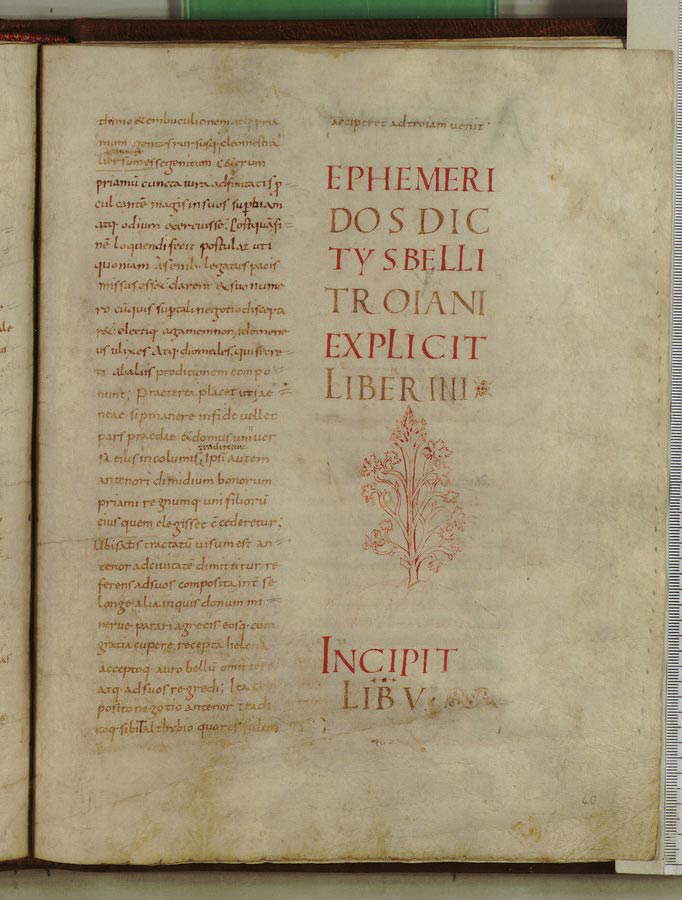
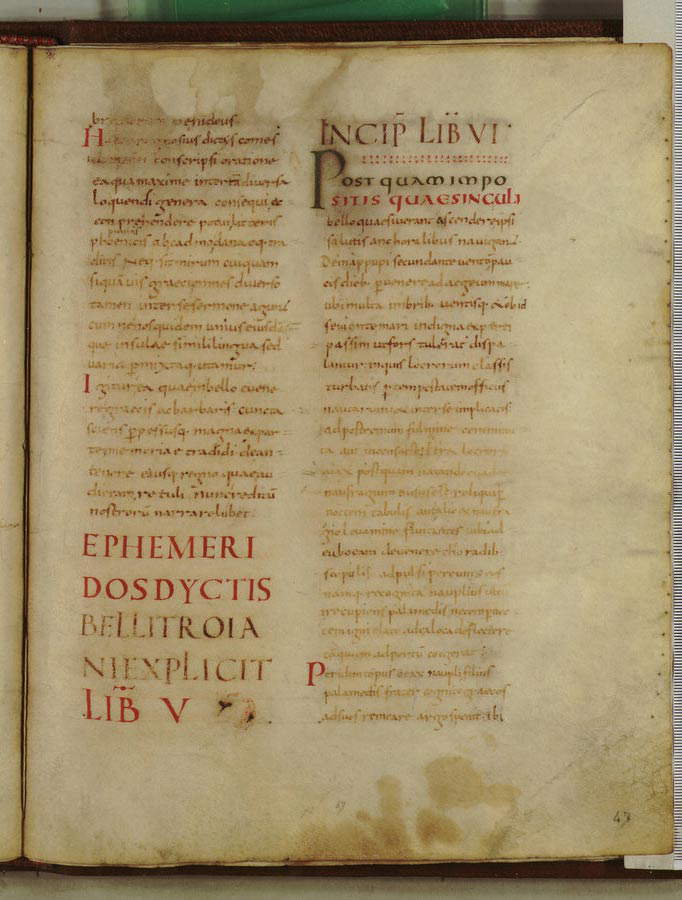 Vittorio
VittorioIn that 1455, the codex was seen and described by the humanist Pier Candido Decembrio, and probably shortly thereafter had to be dismembered, a plausible reason why the works of Suetonius do not appear in the manuscript today. We know that, after a trip to Germany in 1451, Enoch d’Ascoli had brought with him several codices, both original and copied, for the library, to which, however, the Hersfeld fragment would never arrive because of the hostility that the new pope, Callistus III, had toward the humanistic milieu. It is likely, the scholar Paolo Viti speculates, that a “clumsy operation carried out by Enoch - assuming he was actually the author - on the ancient codex brought by Hersfeld dates back to that time: this manuscript would have been dismembered in order to enhance its sale, since by then it could no longer be purchased for the Vatican Library through Decembrio.” However, the manuscript would have remained with Enoch, who would have taken it with him to Ascoli Piceno: this could explain the reason for its presence in the Marche region. We know for certain, however, that the codex, in the second half of the 15th century already appeared in the library of the brothers Stefano and Francesco Guarnieri, humanists from Osimo. It was probably Stefano Guarnieri, from 1465 a papal-appointed chancellor of Perugia, and especially known to be a skilled copyist, who made the 15th-century additions to the text.
The codex would not leave the Marche for several centuries: in 1793 it was still in the family library when the last descendant, Sperandia Guarnieri, moved the collection to the home of her husband, Count Nicola Balleani. The library then passed to the Balleani (later Baldeschi-Balleani) family of Jesi, and the manuscript remained buried among the other volumes in the collection without anyone paying attention to it. At least until September 29, 1902, the day when Marco Vattasso, prefect of the Vatican Library, noticed the work in the library of Count Aurelio Guglielmi-Balleani and recognized in it what he believed was the oldest witness to Tacitus’Agricola. In 1907, another scholar, Cesare Annibaldi, who taught Latin and Greek at the Vittorio Emanuele II classical high school in Jesi, first studied the Codex Exinate, proposed identifying what would henceforth be called Codex Aesinas with the Hersfeld Codex, and attributed the additions to Stefano Guarnieri.
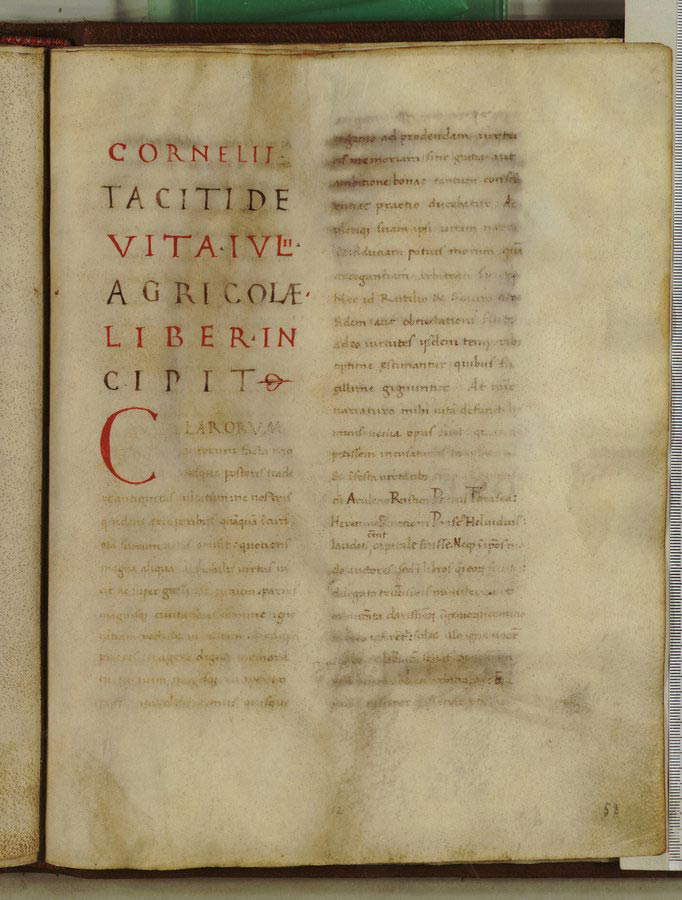
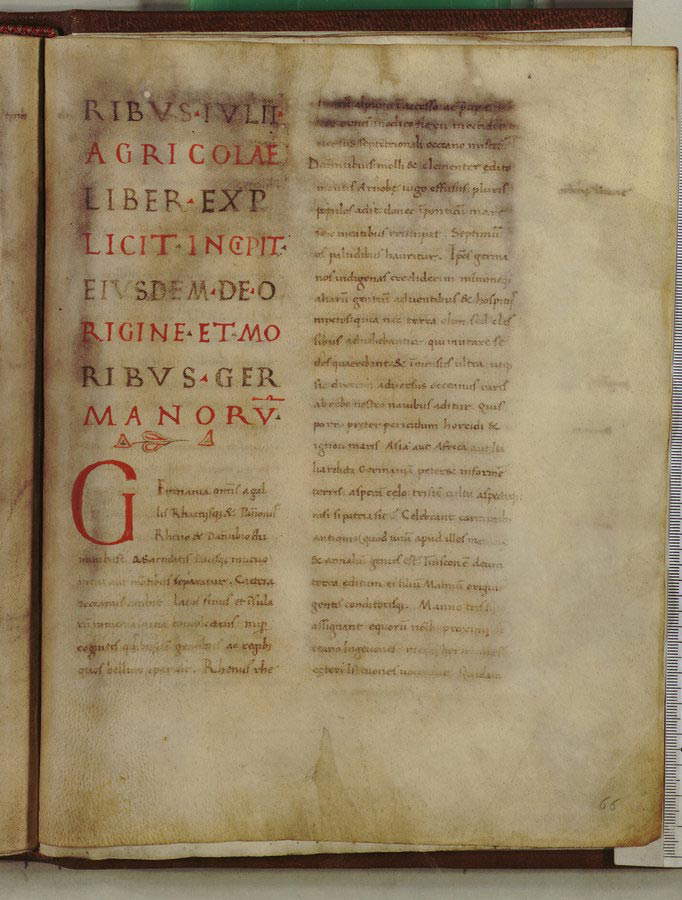
Attention to the codex grew out of all proportion, it was assigned the shelfmark Latinus 8, and it became an object of strong interest, so much so that in 1929 the Balleani family thought of selling it at auction at Sotheby ’s in London, but failed to do so: the reason is not known, perhaps it remained unsold, or more likely it was withdrawn. The Bologna Bibliographic Superintendence had also realized the value of the codex: so it decided to notify them on March 18, 1933, in order to prevent a repetition of attempts like the one four years earlier and thus to prevent the codex from leaving the national borders. Even beyond the Alps, the Codex Aesinas had raised attentions, those of Nazi Germany: in 1938, in fact, Heinrich Himmler, at the time of Adolf Hitler’s visit to Rome, asked to be allowed to purchase it for his Ahnenerbe Stiftung, the foundation he established in 1935 as a center for research on the history of the Aryan race. Himmler was in fact interested in Tacitus’s Germany because of the author’s remarks on the Germanic tribes, described as strong, austere and indomitable peoples, as opposed to the vicious Romans (Tacitus’s pamphlet was above all to be understood as a kind of pamphlet that on the one hand condemned the decadence of imperial policy and on the other warned the empire about the dangers that could come from the north).For the Nazis, Germania, naturally amended from the parts in which Tacitus also listed the vices of the Germanic peoples, had become a powerful propaganda tool, and Himmler wished to get his hands on the oldest witness to Tacitus’s text.
It is said that the importance of the Codex Exinate to the Nazis was such that Hitler himself would request it from Mussolini, and the latter would promise it to him. However, Italian scholars, as soon as news of a possible sale to Himmler leaked out, protested vehemently, and in the end the government denied permission to export it: it was only granted, in 1939, to the German scholar Rudolf Till to study it in Rome on behalf of the Ahnenerbe Stiftung (the study later resulted, in 1943, in the publication of an important monograph on the manuscript). The Nazis, however, did not give up: during the occupation, in 1944, a retreating SS commando, evidently convinced that he could find the codex in the Marche region, attempted to steal it in a daring manner. The commando searched and ransacked first Count Balleani’s palace in Fontedamo, near Ancona, after which it also raided the Balleani’s house in Osimo and then the family palace in Jesi. They were unable to find it: the codex had been well hidden by the owners, who managed to rescue it from the clutches of the Nazis.
It was still given up for lost, however, until the 1960s, when it was loaned by the Balleani family to the Biblioteca Nazionale Centrale in Florence: kept in a safe deposit box, it was severely damaged by the flood, as recalled in the opening. The water caused damage “especially to the external papers,” wrote Francesca Niutta, “causing large stains of naphtha and mud, compromising legibility in several places and altering the color of the ink; they are now largely illegible to the naked eye and poorly decipherable with a UV lamp, as are the initial and final pages.” For some of the papers, however, there is a photographic reproduction made in Rome and published by Rudolf Till in 1943. The codex was later restored in the laboratory of Grottaferrata Abbey and then returned to Jesi, where it was also displayed, in 1988, at the Vittorio Emanuele High School. Finally, in 1994, after another attempt to sell it, it was purchased by the Ministry of Cultural Heritage at the suggestion of scholar Antonio Maria Adorisio, along with two other codices owned by the Baldeschi-Balleani family, and destined for the Biblioteca Nazionale Centrale in Rome, with the new designation “Vittorio Emanuele 1631.” The fact that the manuscript bears the name of the high school where its “modern” discoverer taught is, in fact, a pure coincidence: the manuscript was in fact assigned, after its purchase, to the Vittorio Emanuele Fund of the Biblioteca Nazionale Centrale di Roma (which in turn was named after the king of Italy when it was founded in 1876), with catalog number 1631. This is the library’s open fund, where manuscripts, both ancient and modern, end up. At present, more than 1,700 manuscripts are included in the fund. After eleven centuries, in short, the Exinate codex, now “Vittorio Emanuele 1631,” has found a new home, a computer version (in fact, it has been fully digitized and is freely available for consultation in its entirety) and, most importantly, it has finally found... tranquility.
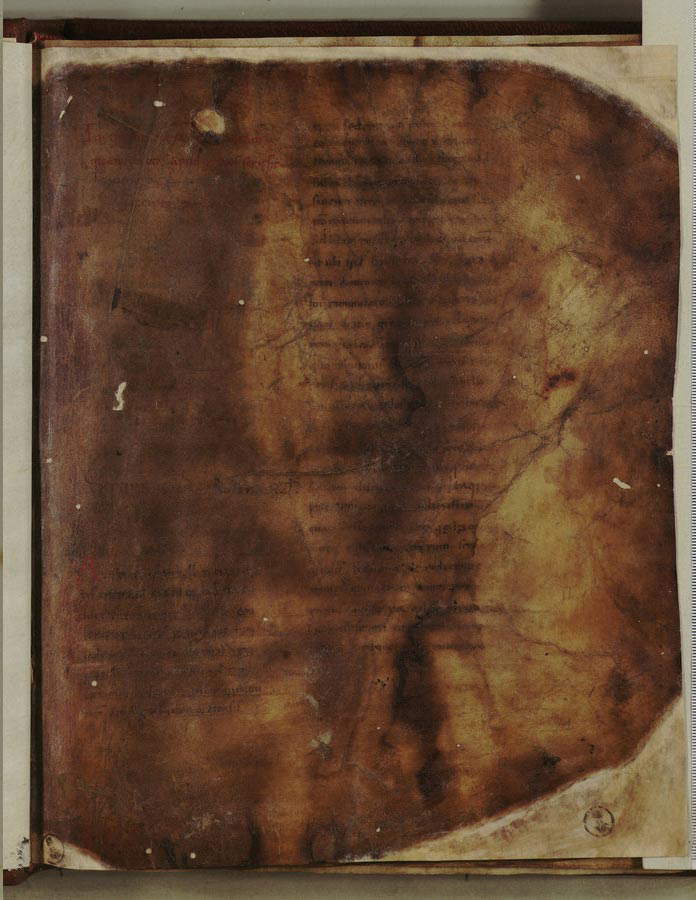
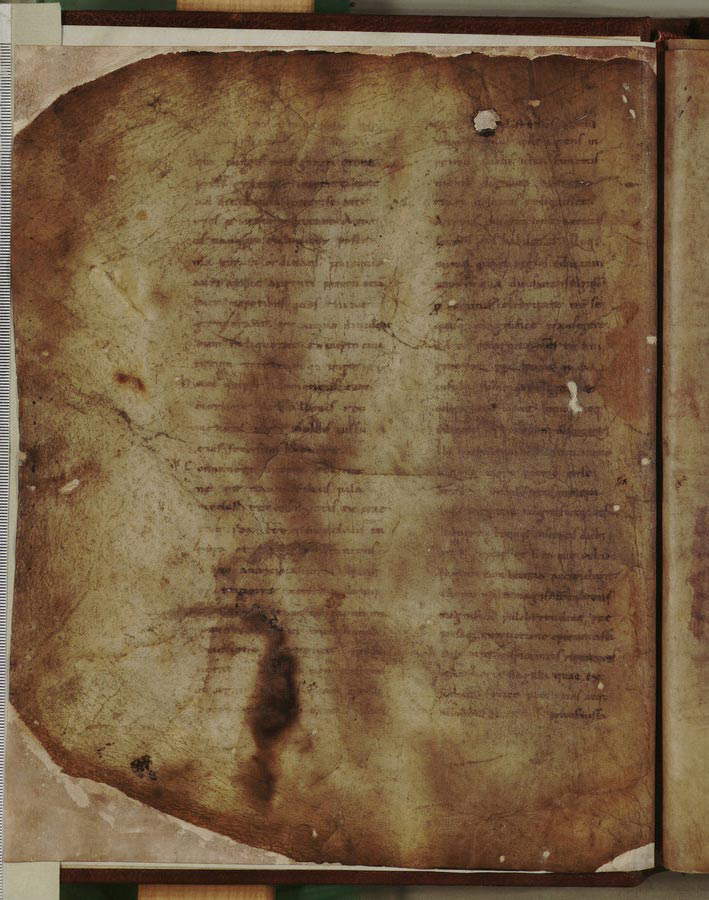 Vittorio
VittorioThe National Central Library of Rome
The National Central Library of Rome was inaugurated on March 14, 1876 in a wing of the Collegio Romano, the site of the former Bibliotheca Secreta or Jesuit Major and today the seat of the Ministry of Culture. The library that found its home in the Collegio Romano was the original nucleus of the new institution, to which were added the manuscript and printed collections of sixty-nine convent libraries devolved to the Kingdom of Italy after the post-unification suppression of religious congregations. As early as the 1920s, the old location was perceived as inadequate for an ever-growing library, but the move took until 1975: one hundred years after its founding, the National Central Library of Rome was in fact moved to its new home in the Castro Pretorio district, the large building designed by architects Massimo Castellazzi, Tullio Dell’Anese and Annibale Vitellozzi, adherents of the Modern Movement current. Inaugurated on January 31, 1975, the new architectural complex (made of reinforced concrete, glass and aluminum, covering more than 50,000 square meters of floor space), is divided into four bodies: the book depository (which spreads over ten floors), the offices, atrium and exhibition spaces (occupying a five-story building), the Conference Hall and reading rooms.
The interior spaces for the public were recently renovated, with removal of architectural barriers, according to a design that favored curvilinear elements and state-of-the-art materials, multiplying the book distribution points, expanding and organizing the reading rooms into thematic areas, and creating new rooms for meetings and seminars, a bookstore, and a cafeteria. The interior gardens were also rearranged and the space for exhibitions was also rethought.. Today, the National Central Library of Rome holds about 6 million volumes, 8,000 manuscripts, 120,000 autographs, 2,000 incunabula, more than 25,000 cinquecentine and 20,000 maps, 10,000 prints and drawings, in addition to those collected in volumes, more than 50,000 periodical titles and 34,000 doctoral dissertations. Book depository shelving currently covers 112 linear kilometers. In addition, the National Center for the Study of Manuscripts has been established at the National Central Library in Rome since 1989, which collects the microfilms of manuscripts from Italian libraries in a single location. The Center has been housed since the beginning of 2018 in the Manuscript Room.
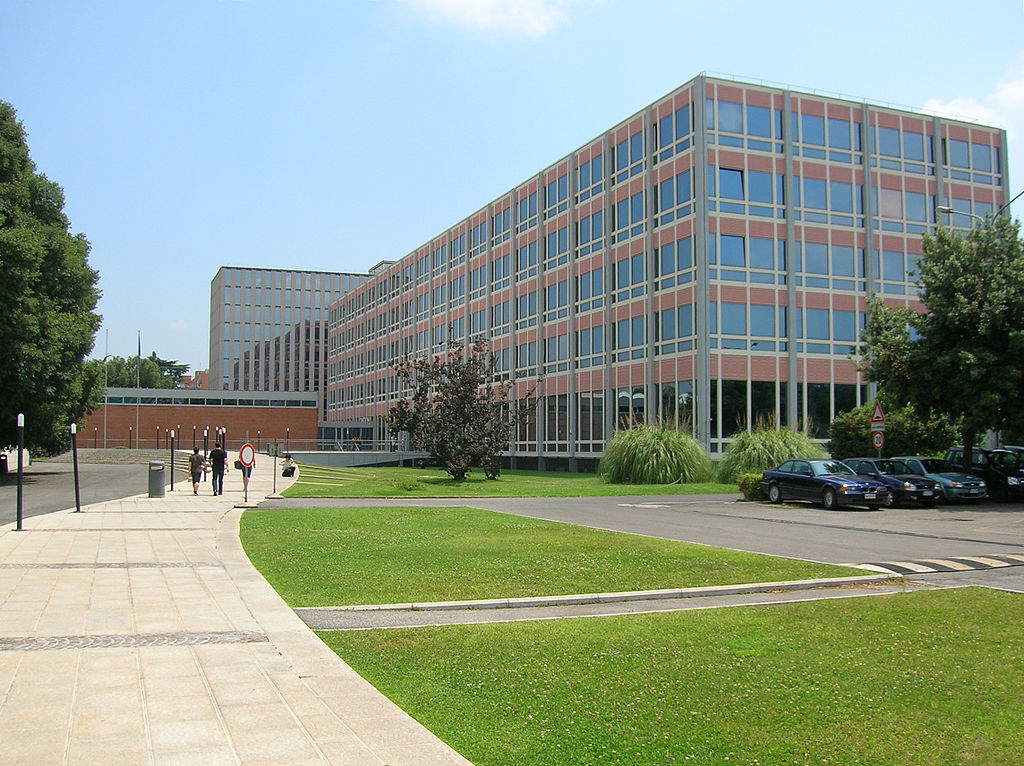
Warning: the translation into English of the original Italian article was created using automatic tools. We undertake to review all articles, but we do not guarantee the total absence of inaccuracies in the translation due to the program. You can find the original by clicking on the ITA button. If you find any mistake,please contact us.




























